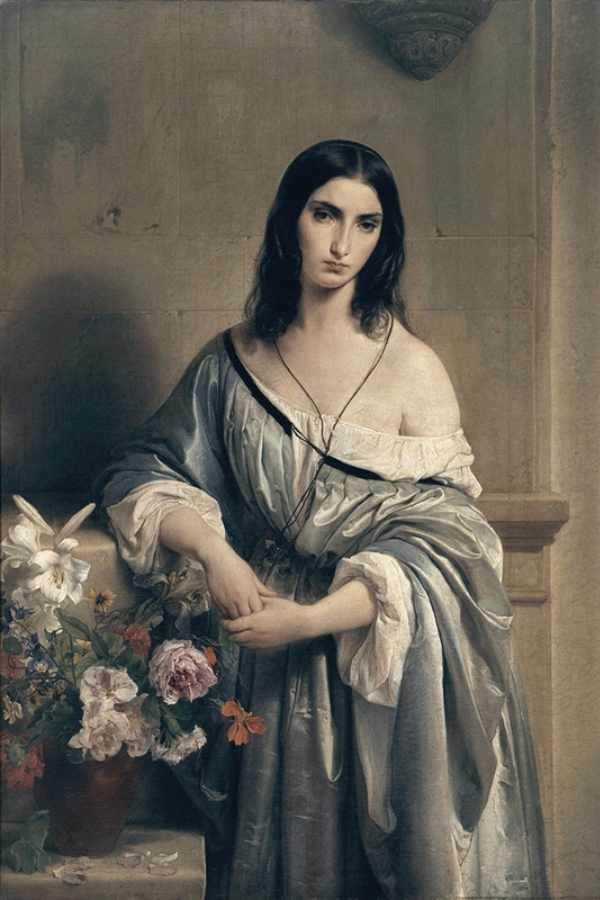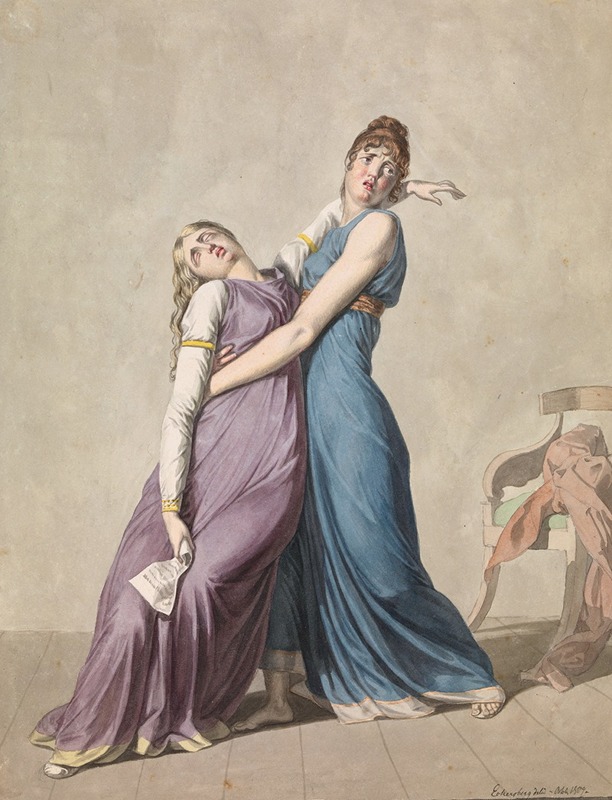

The Horrifying, Heartbreaking History of Female Hysteria Treatment
Summary
The history of hysteria treatment for women spans from the 5th century BCE to the mid-20th century, reflecting significant medical, social, and psychological misunderstandings. Initially rooted in the belief of a “wandering uterus,” treatments evolved from marriage and pregnancy to religious exorcisms and, later, medical interventions like hypnosis and hysterectomies. Understanding this history is crucial for addressing past gender biases in medicine, learning from these mistakes, and developing a more holistic and empathetic approach to women’s health today.
Reflection Questions
- How did the cultural and societal views of women’s roles influence the medical treatment of hysteria throughout history?
- What are some specific ways in which historical treatments of hysteria have shaped modern perceptions and treatment of women’s mental health?
- In what ways can the medical community ensure that the lessons learned from the mistreatment of women in the past are applied to current and future healthcare practices?
Journal Prompt
Reflect on a time when you felt your health concerns were dismissed or misunderstood by a medical professional. How did this experience affect your perception of the healthcare system? Consider the historical context of hysteria treatment for women and explore how understanding this history might influence your expectations and interactions with healthcare providers today. What changes would you like to see in the medical field to better address the needs of women?
It’s Mental Health Awareness Month, so we’re examining issues that affect much of our readership: women. With roots tracing all the way back to the 5th Century BCE through the Victorian Era to the mid 20th Century AD, treatments of female “hysteria” fall under that umbrella. The history of hysteria treatment for women is a fascinating yet obviously troubling journey through medical, social, and psychological understanding (mostly misunderstanding). Based in Hippocratic Theory, hysteria treatments for female patients were initially based on the belief that the uterus wandered through the body. In the centuries that followed, hysteria was often viewed as a result of demonic possession or witchcraft. Eventually, Jean-Martin Charcot used hypnosis to study and treat hysteria while 19th Century doctors recommended hysterectomies as a cure.
Why It’s Vital to Remember the Mistreatment of Women Under the Guise of Medical Care


Before we explore the history of hysteria, we must underscore the importance of remembering how medical professionals of the past used inaccurate information to mistreat women. Remembering the history of hysteria treatment and other ways that women were mistreated medically is crucial for several reasons. It helps us address gender bias, learn from past mistakes, develop a more holistic approach to women’s health, and inform policy decisions.
Understanding Historical Context and Medical Progress
Understanding the medical practices and societal attitudes of the past sheds light on how far we’ve come and the origins of certain medical practices and biases. For instance, the treatment of hysteria with methods like the rest cure or manual pelvic massage highlights historical misunderstandings of women’s health. By examining these historical treatments, we can appreciate the advancements in medical science and the shift from superstition and gender biases to evidence-based and holistic care.
Recognizing and Addressing Gender Bias


The history of hysteria and other mistreatments highlights the deep-rooted gender biases in medicine. Women were often subjected to harmful and humiliating treatments based on erroneous beliefs about their bodies and supposed mental disorders.
Recognizing these biases helps in addressing current disparities in healthcare, where women’s symptoms and pain are sometimes still dismissed or misdiagnosed. Understanding this history empowers each female patient to advocate for better healthcare and pushes the medical community to continue striving for gender equity in medical research and treatment.
Learning from Past Mistakes
Learning about the mistreatment of women in the past serves as a cautionary tale, ensuring that such mistakes are not repeated. It emphasizes the importance of patient-centered care, ethical medical practices, and the need for continual questioning and improvement in medical science.
It also underscores the importance of developing and maintaining high ethical standards in medical practice, including informed consent, respect for patient autonomy, and the importance of mental health.
Holistic Understanding of Women’s Health


This history highlights the importance of a holistic approach to women’s health, recognizing the interplay between physical, psychological, and social factors. It promotes a more comprehensive understanding of health and well-being, moving beyond reductionist views of medical conditions. The recognition of historical misdiagnoses like hysteria as responses to trauma and psychological distress helps in understanding the critical role of mental health in overall health care.
Informing Policy and Education
Historical insights can inform better policy decisions in healthcare, ensuring that policies are inclusive and sensitive to the needs of all genders. It can also lead to the implementation of programs that specifically address the healthcare needs of women.
Incorporating this history into medical education can foster a more empathetic and knowledgeable healthcare workforce that is better equipped to handle the nuances of women’s health.
Tracing the History of Hysteria Treatment
Ancient Times


Statue of Hippocrates in front of the Mayne Medical School in Brisbane, Attribution: By Kgbo – Own work, CC BY-SA 4.0, https://commons.wikimedia.org/w/index.php?curid=103636989
The concept of hysteria has its roots in ancient Greece, where it was first described by Hippocrates, often referred to as the “father of medicine.” The term “hysteria” itself originates from the Greek word “hystera,” meaning uterus. Hippocrates and other Greek physicians believed that many physical and psychological ailments in women were caused by a wandering uterus, a condition they termed “hysteria.”
According to the Hippocratic theory, the uterus was thought to be an independent and mobile organ that could move throughout the body, causing a variety of symptoms depending on its location. If the uterus traveled upwards, it could cause suffocation and a sense of choking, while movement downwards could result in a sense of heaviness and lethargy. This wandering was believed to result from a lack of sexual intercourse or fulfillment, which caused the uterus to become light and dry, prompting it to move around in search of moisture.
Fuel your creative fire & be a part of a supportive community that values how you love to live.
subscribe to our newsletter
Treatments for Female Hysteria in Ancient Times
To treat this condition, Hippocrates prescribed methods aimed at returning the uterus to its proper place. Marriage and pregnancy were commonly recommended, as sexual intercourse was thought to moisten and stabilize the uterus. Other treatments included fumigations with pleasant-smelling substances near the female genitalia to “lure” the uterus back into position, or applying foul-smelling substances to the nose to drive the uterus downward. Physical manipulations and the use of pessaries (medical devices inserted into the vagina) were also part of the treatment regimen.
This early understanding of hysteria highlights how medical theories were deeply intertwined with cultural beliefs about women’s bodies and their roles in society. The focus on marriage and pregnancy as cures for hysteria brought about by sexual deprivation underscores the limited view of women’s health, primarily through the lens of their reproductive functions. These ancient practices laid the groundwork for centuries of misconceptions about women’s sexuality and mistreatment of women’s health issues.
Middle Ages to Renaissance
During the Middle Ages and the Renaissance, the concept of hysteria evolved but continued to be mired in superstition and gender biases. In medieval Europe, hysteria was often interpreted through the lens of religion and the supernatural.
Women exhibiting symptoms that might now be recognized as hysteria, such as convulsions, emotional outbursts, or other unexplained physical symptoms, were frequently suspected of witchcraft or demonic possession. This period saw many women accused of witchcraft being subjected to trials, torture, and execution.
Treatment of Hysteria During the Renaissance


The Renaissance brought some advancements in medical knowledge, but the understanding of hysteria remained limited. Physicians began to view hysteria as a more medical condition, but the treatments were still harsh and ineffective. Treatments ranged from herbal remedies and bloodletting to exorcisms and other religious rituals. The influence of ancient Greek medical theories persisted, and the idea of a wandering uterus continued to be a popular explanation for the symptoms observed in women.
Despite the progress in other areas of science and art during the Renaissance, the treatment of hysteria remained largely punitive and focused on controlling women’s bodies and behavior. This era’s blend of emerging medical theories and lingering superstitions contributed to a continued misunderstanding of women’s health, setting the stage for more systematic medical approaches in the centuries to follow.
18th and 19th Centuries
The 18th and 19th centuries marked a significant shift towards the medicalization of hysteria, though the condition was still poorly understood and often mistreated. During this period, hysteria began to be seen less as a supernatural affliction and more as a medical disorder. However, the treatments varied widely and often included harmful practices. Physicians used a range of methods, from hydrotherapy (water treatments) and electrical stimulation to more invasive procedures like clitoridectomy.
Dr. Jean-Martin Charcot’s Role in the Treatment of Hysteria


In the late 19th century, French neurologist Jean-Martin Charcot contributed to the study of hysteria. Charcot worked at the Salpêtrière Hospital in Paris, where he conducted extensive research on hysteria, using hypnosis as a treatment and diagnostic tool. Charcot’s work was influential in shifting the perception of hysteria from a predominantly female condition to one that could also affect men. He argued that hysteria was a neurological disorder (not a sexual disorder or mental illness), which marked a move towards a more scientific and analytical approach to the condition.
Charcot’s methods, including his public demonstrations of hypnosis and his use of photography to document hysterical fits, were both groundbreaking and controversial. His work laid the foundation for future psychological theories and treatments, including those developed by his student Sigmund Freud.
The Victorian Era


The Victorian era saw hysteria become a widespread diagnosis for women exhibiting a range of symptoms, from anxiety and nervousness to more severe physical manifestations. The condition was thought to be linked to the stresses and constraints of women’s domestic lives and their reproductive systems. The term “hysteria” was used to cover a wide array of ailments, which made it a convenient but often inaccurate diagnosis for many women.
The Infamous Rest Cure


One of the most well-known treatments of the time was the “rest cure,” popularized by Dr. Silas Weir Mitchell. This treatment involved strict bed rest, isolation from family and friends, a high-calorie diet, and minimal mental stimulation.
The rest cure was intended to calm the nervous system but often led to further mental distress and a sense of helplessness. This treatment was famously critiqued by Charlotte Perkins Gilman in her short story “The Yellow Wallpaper,” which highlighted the damaging effects of enforced inactivity and isolation on women’s mental health.
Early 20th Century
Sigmund Freud revolutionized the understanding of hysteria by attributing it to psychological conflicts and trauma rather than purely physical causes. Freud’s psychoanalytic approach suggested that repressed emotions and unresolved conflicts were at the root of hysterical symptoms. His work on hysteria led to the development of psychoanalysis, a new method of treatment that focused on exploring the unconscious mind through techniques such as free association and dream analysis.
The Role of the Vibrator
Rachel P. Maines’ book The Technology of Orgasm discusses how hysteria was historically treated by manual genital stimulation to induce “hysterical paroxysm” (orgasm). This practice led to the invention of the vibrator in the late 19th century, designed to relieve physicians from the laborious task of manual stimulation.
Initially, vibrators were marketed as medical devices to treat hysteria and other female ailments, reflecting the medical community’s focus on physical rather than psychological treatments. Over time, vibrators transitioned to consumer products, highlighting changing attitudes towards female sexuality and health.
Mid to Late 20th Century
With the advancement of psychiatric and psychological sciences, the diagnosis of hysteria began to decline. It became increasingly recognized that many symptoms attributed to hysteria were indicative of other mental health conditions, such as depression, anxiety disorders, and somatic symptom disorders. This period saw a shift towards more accurate and specific diagnoses, reflecting a deeper understanding of mental health.
The Women’s Movement


The feminist movement in the 1960s and 70s played a crucial role in highlighting the gendered nature of the diagnosis and treatment of hysteria. Activists and scholars critiqued the medical community for its paternalistic attitudes and its tendency to pathologize women’s natural responses to social and personal stressors. This scrutiny led to significant changes in the medical field, promoting a more nuanced and equitable approach to women’s health.
Contemporary Understanding
Today, the term “hysteria” is no longer used in modern medical practice. Conditions once labeled as hysteria are now understood through various diagnoses, including conversion disorder and other somatic symptom disorders. This shift reflects a broader understanding of the complex interplay between mind and body, and the importance of addressing both psychological and physical health in treatment.
Holistic and Evidence-Based Treatments
Contemporary treatments for conditions historically diagnosed as hysteria are more holistic and evidence-based. They often include psychotherapy, medical treatment, and support for underlying physical health issues. This approach emphasizes the importance of treating the whole person, rather than just the symptoms, and recognizes the significant impact of psychological and social factors on health.
The history of hysteria treatment for women reflects broader societal attitudes towards women’s health and autonomy. It has evolved from a misunderstood and often misogynistic concept to a more nuanced and compassionate understanding of women’s mental health. This evolution underscores the importance of continuous learning and adaptation in the medical field, driven by both scientific advancements and societal change.
Final Thoughts: Further Reading on the History of Female Hysteria Treatment


For more information about how medical practitioners treated the female body throughout history and how times finally changed, we recommend The Technology of Orgasm: ‘Hysteria’, the Vibrator, and Women’s Sexual Satisfaction, written by Rachel P. Maines and published by Johns Hopkins University Press. This book explores the history and treatment of hysteria, specifically focusing on the role of medical treatments and the invention of the vibrator. The book delves into how hysteria was historically diagnosed and treated, often through the lens of gender and sexuality. You can purchase the book here or head to your local library for a copy.








